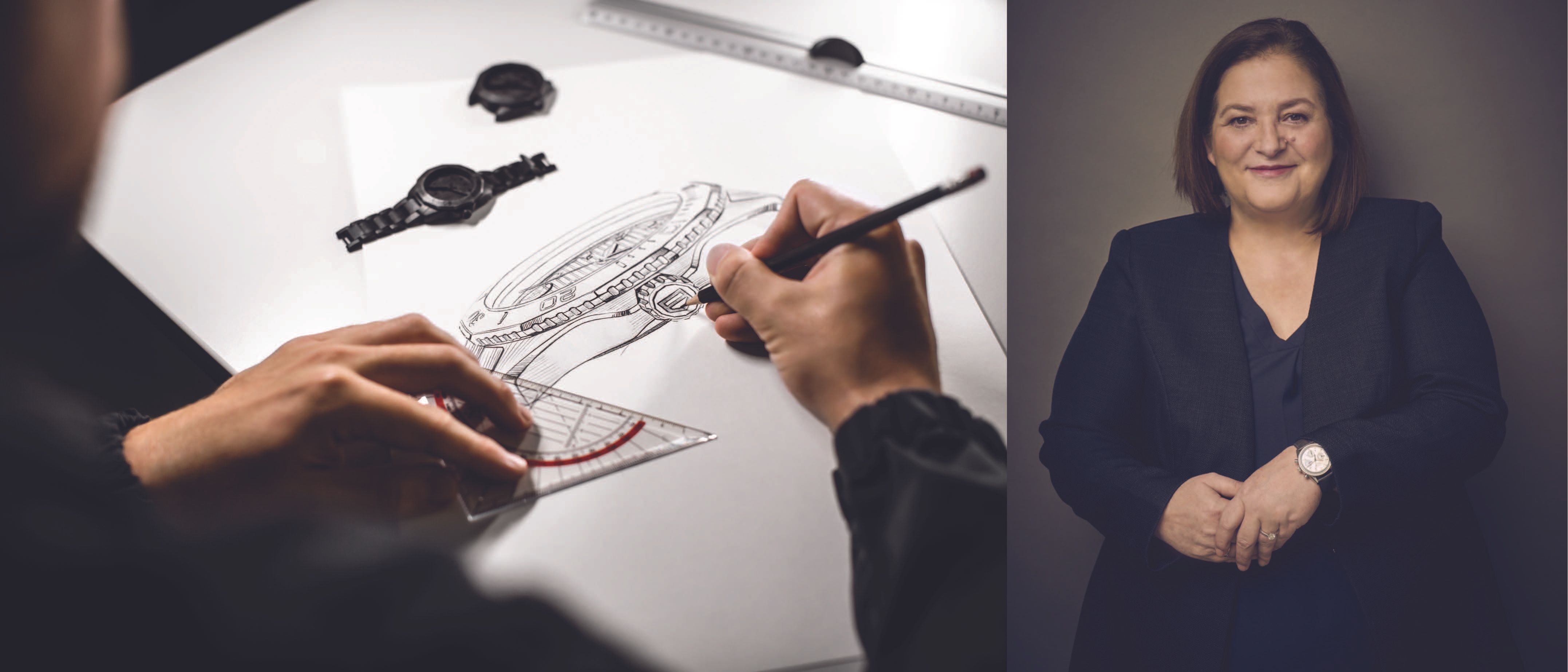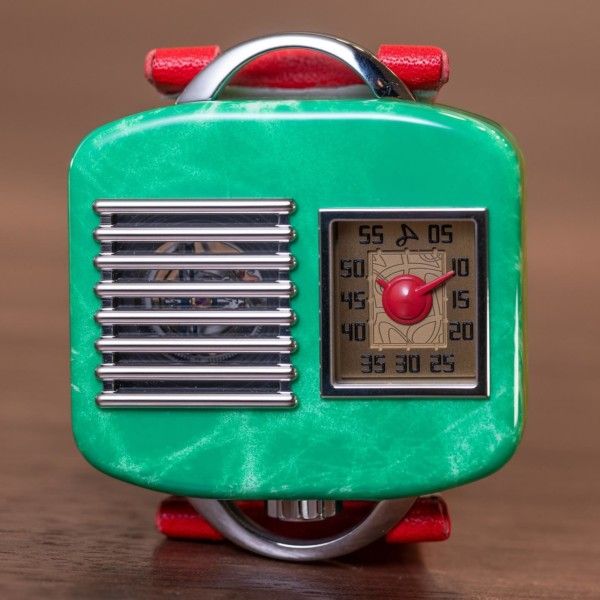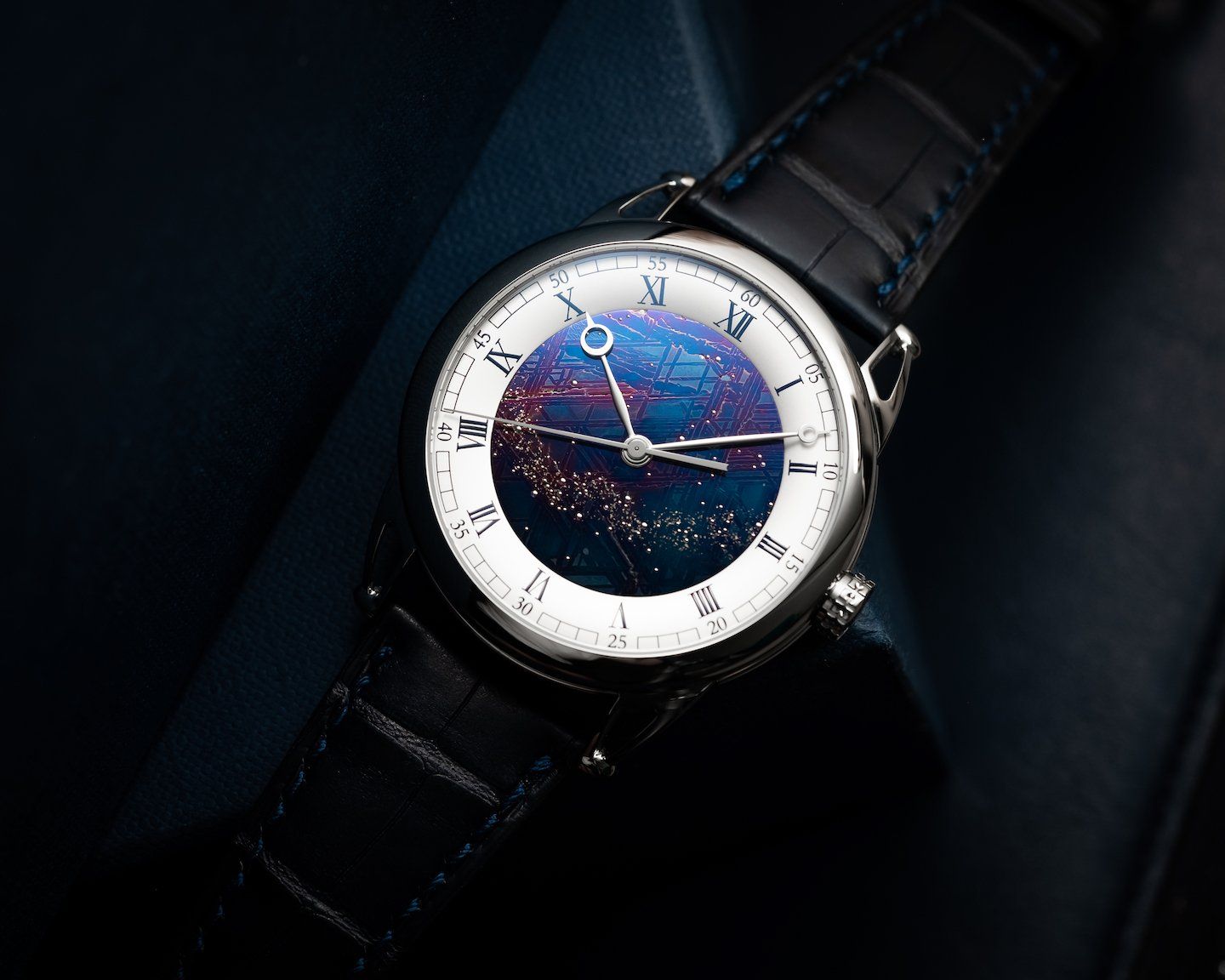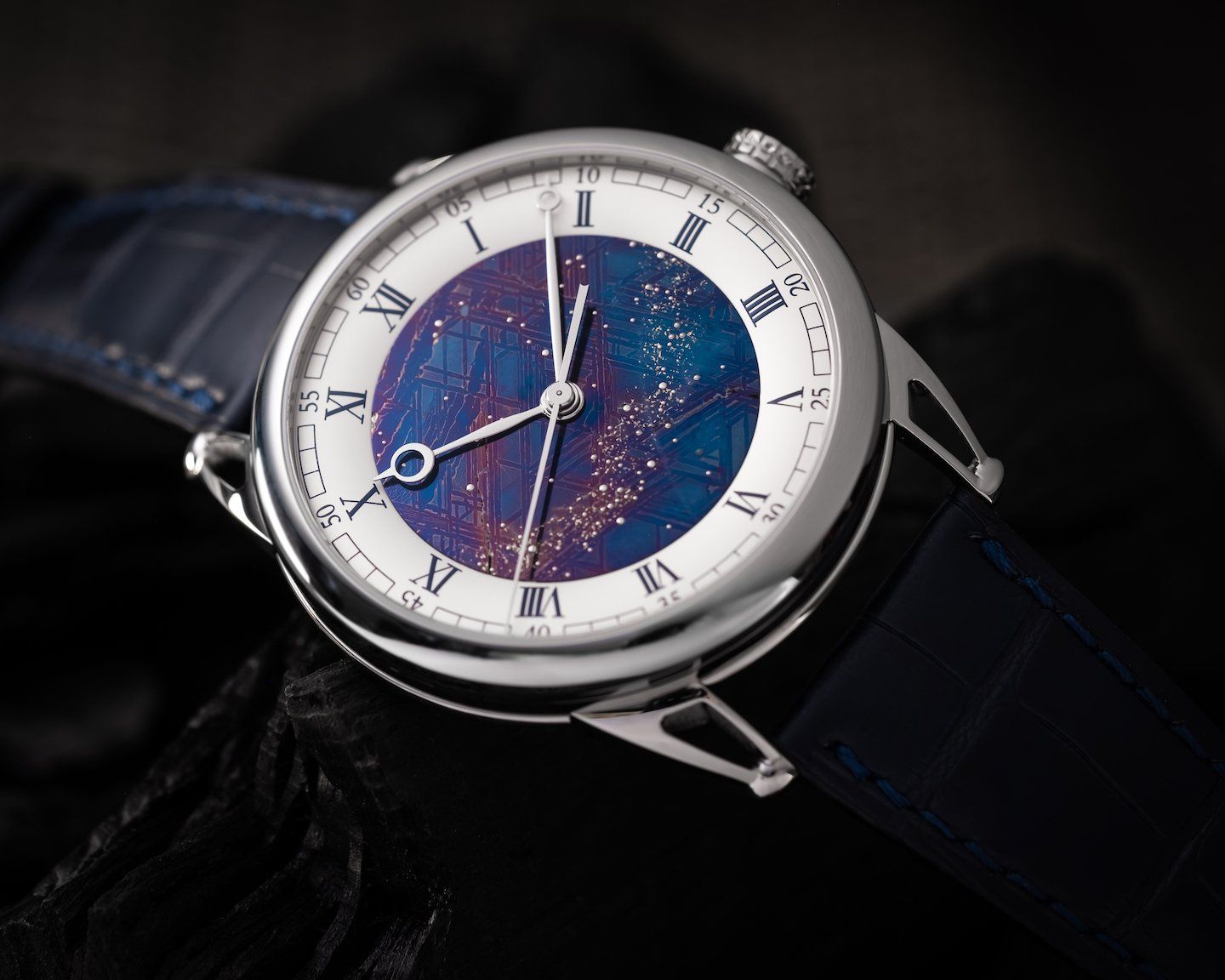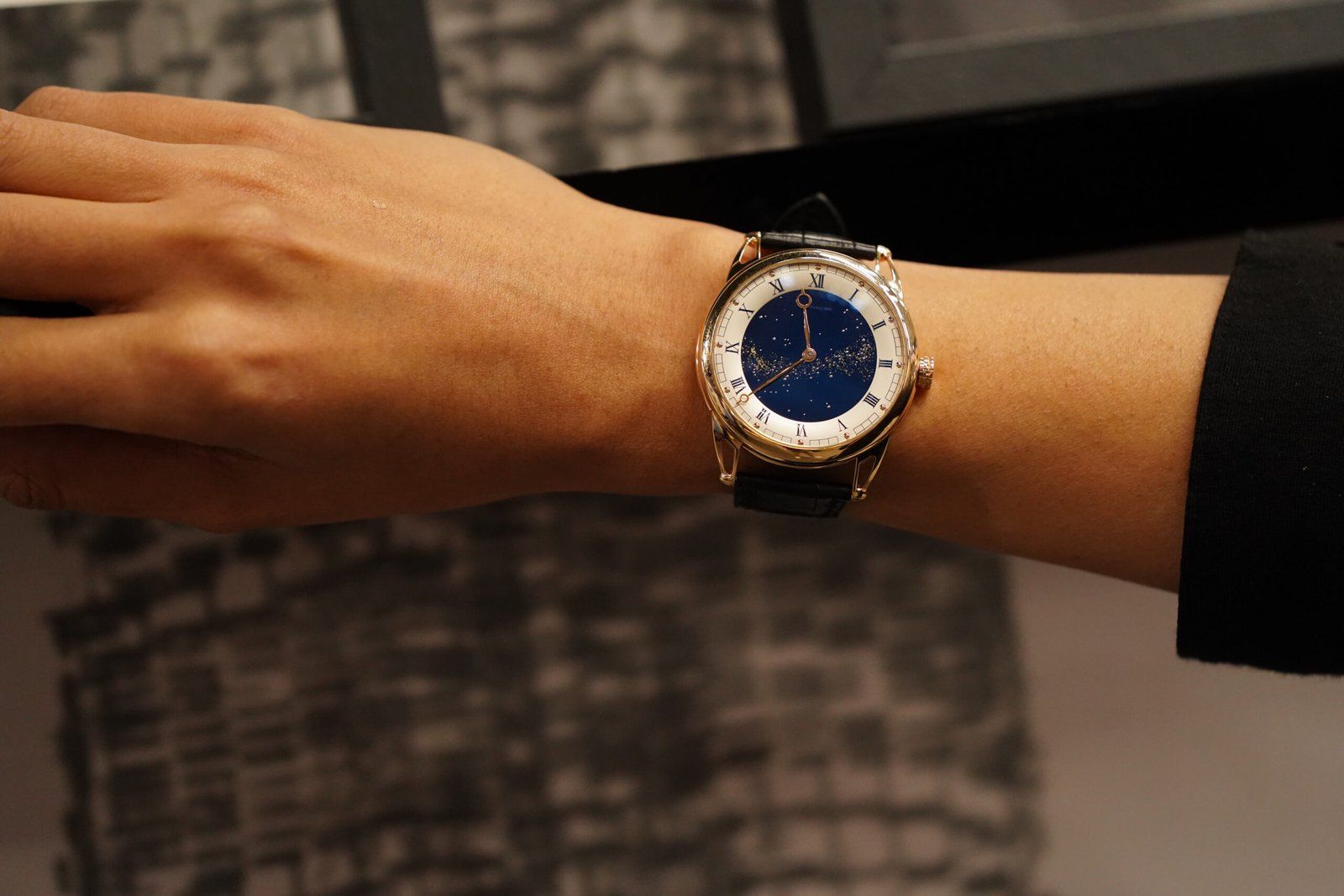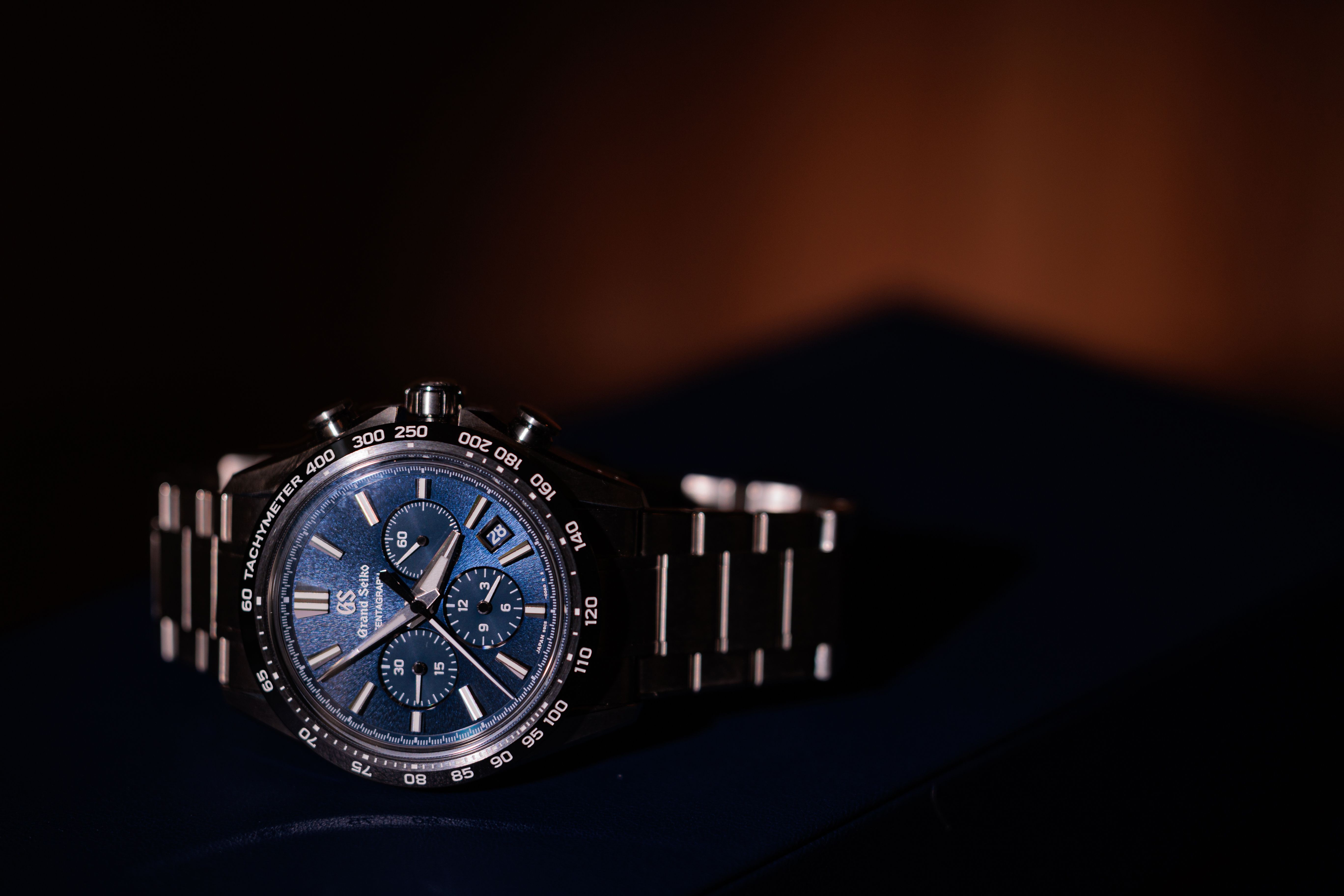Feel The Magic Of The Stars With De Bethune’s New DB25 Starry Varius Aérolite
Watches can be quite a dream. This new drop today surely is. And it is in the very heart of stars, where our thermometer would show a few million degrees, that iron meteorites are born. A new star, or possibly a galaxy, is born from this potent and lyrical force.
The DB25 Starry Varius Aérolite, fashioned from a meteorite, bears witness to this cacophonously coordinated energy. The dial of this De Bethune watch has been given a starry sky design in homage to this everlasting substance. This marks the imprint of a timeless instant.
"Observing the sky is one way to learn about the passage of time even if you don't have any other means of measuring it. This is a common motif in the world of timepieces”, Master Watchmaker and Inventor of De Bethune Denis Flageollet explains. De Bethune, ever on the lookout for fresh inspiration, finds it in the complexity and purity of nature. Only five DB25 Starry Varius Aérolites will be manufactured each year.
Stunning aesthetics from beyond the stars
The dial of the DB28 Kind of Blue Meteorite and, more recently, the dial of the DB28XP Météorite are all examples of how De Bethune has incorporated ferrous meteorites into their designs.
Denis Flageollet, the Master Watchmaker, has a thing for space rocks. One way he pursues this interest is by conducting regular experiments into methods of reducing iron ore in the hopes of one day producing his own metal. After much trial and error with Russian and Egyptian meteorites, the Maison decided to work with a new type of meteorite known as Muonionalusta Meteorite because of his genuine passion for the material.
This meteorite, said to have hit Earth over a million years ago, was discovered in a riverbed in a region between Finland and Sweden called the Muniono.
The initial piece was found in Sweden in the year 1906. Made primarily of iron and nickel, its "Widmanstätten" pattern is characterized by angular lines that cross at 60 degrees.
The DB25 Starry Varius Aérolite features a dial decorated with a space-forged ancestral stone. Each watch is one-of-a-kind thanks to the combination of a metal alloy that gives the dial a distinct texture and geometric patterns aligned in a precise way.
Creating a celestial wonderland in the vastness of space
By adding a starry sky and its Milky Way to a blued meteorite dial, De Bethune has once again demonstrated its mastery of thermal oxidation of metals, taking the level of complexity to new heights. The chemical reactions occurring inside the meteorite when it is heated provide the blue color.
A plethora of tiny white gold pins is artfully driven in between the varying forms and thicknesses of the octahedral geometric structures over this blue dial's surface. These sparkling bursts of light, like millions of tiny stones in midair, give the sky a sense of infinite depth. Each customer's sky is as unique as they are, as it is based on a detailed map of the night sky at a particular location and time.
De Bethune's views on the craft of constructing timepieces
While the circular design of the DB25 Starry Varius Aérolite's case served as inspiration, the ultra-light polished titanium case with precisely integrated open-worked lugs proclaims De Bethune's modern take on the craft of watchmaking.
The new reference, which adopts the Manufacture's visual language, has a silvered disc with a Roman numeral hour circle and an Arabic numeral minute track and is equipped with the same hand-polished steel hands as the DB25 Starry Varius.
Proficiency in Chronometry
The watch's inner workings are made all the more visible by the double anti-reflective coating of the sapphire crystal and the most cutting-edge De Bethune technologies are truly remarkable.
To put it simply, gravity is a major foe of mechanical watches. De Bethune has worked to improve upon the tourbillon first developed by Abraham-Louis Breguet for his pocket watches in the 18th century. So what's the formula? The tourbillon's frequency and rotation speed should be maximized so that it can function optimally on a wrist that is constantly making erratic motions. This feat is easier to describe than to accomplish: making a titanium and silicon tourbillon that vibrates at a frequency of 36,000 times per hour, has a carriage that weighs only 0.18 grams (the lightest ever made in the industry), spins on its axis once every 30 seconds, and is made up of 63 individual components (the lightest of which weighs less than 0.0001 grams!).
The DB2109V4 caliber powers the 42mm timepiece, and it was created, tested, and assembled exclusively within the De Bethune facilities in L'Auberson, Switzerland. The correct reading is guaranteed by the leaping second's display. The watch's balancing wheel, which can be viewed from the rear, is state-of-the-art. De Bethune has been working to increase its performance with a combination of physical and mathematical methods. It makes use of modern technology by having an optimized diameter and being crafted from titanium with little white gold weights strategically positioned on the exterior, which together produce an exceptional quality of inertia, dependability, and regulation.
The balancing spring, a tiny but crucial part often called the "soul" of a mechanical watch, is unique to this type and was designed and manufactured by De Bethune. A smooth curve attached to the outside of the balancing spring keeps the device's centre of gravity precisely in the centre. The almost flawless precision of the blade's concentric development is further bolstered by variations in blade thickness. Reduced thickness, increased concentricity quality adjustment, finer adjustment of the index (regulator), and elimination of its pins are just a few of the many benefits; the curve's shape also works as a shock absorber in the event of accidents.
A celebration of nature
This is a treasured moment, a witness to the very creation of a galaxy. De Bethune continues to honor the raw and unbridled strength of nature. Denis Flageollet says, “No other metal is as charged with pure energy and emotion as the iron meteorites that have taken shape in the furnace of the stars.”
Can you feel the magic of the stars?
